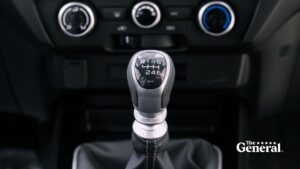1998 Porsche 911 Carrera Steps into a New Era

From the November 1997 issue of Car and Driver.
We were waiting in the paddock of the test track at Porsche’s Weissach development center when we heard the unmistakable, strident cry of the engine—even before we’d caught a glimpse of the car. The flat-six cadence, the raspy exhaust, the cam-chain whine, and the intake rush were being generated, unmistakably, by a 911 with the hammer down.
As the car rounded the corner, we recognized the familiar profile, the characteristic side-window outline, and the muscular curves of the body that randomly reflected the bright sun of southern Germany. When the car rolled closer, however, we noticed that the fender bulges were not quite as pumped as we’d remembered. Nor was the windshield as upright. And the characteristic old-fashioned rain gutters and the air extractor above the rear window were nowhere to be found.
More Archive 911 Carrera Reviews and Buying Advice
Such changes could not be possible without a complete redesign of the basic 911 body shell that has remained largely unchanged since the car’s debut at the 1963 Frankfurt auto show, back when John Kennedy was President. Sure enough, the car that now pulled off the track was the first comprehensive redesign of the car that has come to embody the heart and soul of Porsche.
Known internally as the 996, this new 911 will arrive in the U.S. next spring as a ’98 model. Other than the Carrera moniker, it carries over little from its illustrious predecessor. In fact, it is much more closely related to the new Boxster, sharing that model’s headlights, doors, hood, and front fenders.
Parked next to a current 911, internally dubbed the 993, other changes become evident. The muscularity of the older car’s bulging fenders has been reduced because the 996 is much wider across the doors. The entire tail end of the car is higher than before, for improved aerodynamics and packaging. The vent window panes are gone. The door handles are semi-flush. The roofline flows more smoothly from the windshield. Still, the 996 remains unmistakably a 911.
Inside the familiar shape there’s a more spacious package, thanks to the wider body. The wheelbase is 3.1 inches longer, mostly ahead of the front seats. As a result, the front wheel wells don’t push the front occupants’ feet toward the center of the car as much, and the pedals are better aligned with the steering wheel, which is now attached to a telescoping column. With room for a proper dead pedal, the driving position is better than in any previous 911. Visibility remains excellent in all directions.
Leg room, head room, and shoulder room have also been increased to accommodate the expanding dimensions of latter-20th-century humans, or so says Porsche styling chief Harm Lagaay. He’s also very proud that there’s a little more room in those rear seats. Although they’re still not suitable for adults, the age of the average child that can fit in them is up from 10 to, oh, 11.
More important is the addition of a small luggage area under the rear window that becomes truly useful when the rear seats are folded. Despite a 3.6-inch-longer front overhang, however, trunk volume has grown only fractionally, even though the capacity of the front-mounted fuel tank has shrunk from 19.4 to 16.9 gallons.
Oddly enough, despite the general increase in size, the new 911 has also lost its glove box to a new passenger-airbag location and knee bolster. That, however, is the last creature-comfort-related criticism we have about the 996. The seats are straight from the Boxster and very supportive. The mid-engined model also donated its modern, fully automatic climate-control system. Height-adjustable anchors enhance seatbelt comfort. The power windows glide up and down at a single touch. Side airbags have been installed.
Those who know the 911 as one of the most visceral, charismatic sports cars on the planet might be concerned that our emphasis thus far on space, comfort, and crash protection suggests these were Porsche’s top priorities in the design of the 996. We are pleased to report that such suspicions are unfounded.
Despite its increased size, the 996 is about 110 pounds lighter than its predecessor. This combines with a power increase from 282 to 296 hp and a reduction in the coefficient of drag from 0.33 to 0.30 to yield better performance. Porsche claims a top speed of 174 mph for the new car and a 0-to-60 time of 4.9 seconds, which would make it 0.2 second quicker than the 993. That’s a conservative claim, as we have tested 993s that hit 60 in 4.6 seconds.
The additional power comes from a bored-and-stroked version of the four-cam, 24-valve, water-cooled flat-six engine that made its debut last year in the Boxster. Its displacement has increased from 2480 to 3387 cc. The valves and the ports are upsized accordingly, and as with the Boxster, the timing of the intake camshafts is regulated by the VarioCam system. In addition, the 911 gets a different intake manifold with a crossover pipe connecting the left and right plenum chambers. A valve in this crossover is closed between 2700 and 5100 rpm and open in the rest of the rev range to enhance breathing. As a result, the big engine’s 296 hp at 6800 rpm works out to eight percent more power per liter than the Boxster version’s 201 hp at 6000 rpm.
The 996 weighs within a few pounds of the Boxster, so this highly invigorated powerplant feels very potent. Unlike the Boxster, which feels a bit soft at low rpm, the 996 is gutsy from just off idle all the way to its 7200-rpm redline. A new, stronger gearbox, with six gears rather than the Boxster’s five, makes the most of this power. Although we had no opportunity to test the 996, we ran it up to an indicated 161 mph on a crowded autobahn. Wind noise was remarkably low, and the car was hardly tapped out.
At that speed and below, the new model is impressively stable. In addition to its low drag coefficient, the new body has little aerodynamic lift, with slightly more in front than in back to promote high-speed understeer. As before, a movable rear spoiler helps achieve this stability, and it emerges at 75 mph now rather than at 55 because the water-cooled engine no longer needs the spoiler to enhance cooling. (If a police officer cites the deployed spoiler as evidence that a 996 driver was speeding, he or she can claim that the spoiler was deployed manually with the switch on the dash.)
Underneath, the 996’s front suspension is very similar to the strut arrangement on the Boxster—it uses gas shocks, coil springs, two-piece lower control arms, and an anti-roll bar. In the rear, however, the 996 is fitted with a multilink setup that is different from both the 993’s and Boxster’s strut designs. At both ends, most of the suspension pieces are fabricated from aluminum to save weight.
This suspension yields the most benign handling we’ve ever experienced on any 911 variant, and it has an uncanny combination of responsiveness and stability. The nose of the car responds immediately and directly to the slightest steering inputs; it is also the nose that slides first as you increase the pace. Meanwhile, the tail stays resolutely in place—it refused to break loose even when we applied full power in second gear while exiting a tight switchback in the rain.
Mind you, this experiment took place at a cornering speed that would have occupants of the car hanging from their seatbelts or plastered against a door. Standard equipment on the new model are large, sticky 17-inch tires that feel very grippy. Their traction is fully exploited by larger versions of the Boxster’s aluminum one-piece calipers that squeeze large-diameter cross-drilled brake rotors. As on previous 911 variants, these brakes feel powerful, consistent, and immensely reassuring.
Ride comfort seems much the same as in the current 993 models, even though the 996 no longer uses a rubber-isolated rear subframe. The suspension communicates comprehensive information about the road’s surface, shape, and texture while somehow managing to round the sharp edges of severe bumps and holes.
For now, there is only a rear-drive Carrera coupe. But cabriolet prototypes are already running around, and Carrera 4s, Targas, and Turbos can’t be far behind. Pricing hasn’t been announced, but we expect no major increases over the $67,000 sticker of a current Carrera, thanks to the economies realized by sharing so many components with the Boxster.
That said, Porsche’s engineers and designers have done a miraculous job of preserving the traditional 911 image and character. With its enhanced comfort, the new 996 is more everyday usable than its predecessors. And it’s even faster.
Car and Driver
Arrow pointing downArrow pointing down
Specifications
Specifications
1998 Porsche 911 Carrera
Vehicle Type: rear-engine, rear-wheel-drive, 2+2-passenger, 2-door coupe
ESTIMATED BASE PRICE
$68,000
ENGINE
DOHC 24-valve flat-6, aluminum block and heads, port fuel injection
Displacement: 207 in3, 3387 cm3
Power: 296 hp @ 6800 rpm
Torque: 258 lb-ft @ 4600 rpm
TRANSMISSION
6-speed manual or 5-speed automatic
DIMENSIONS
Wheelbase: 92.5 in
Length: 174.4 in
Width: 69.5 in
Height: 51.4 in
Passenger Volume, F: 48 ft3
Trunk Volume: 5 ft3
Curb Weight: 2900-3000 lb
MANUFACTURER’S PERFORMANCE RATINGS
62 mph, manual/automatic: 5.2/6.0 sec
124 mph, manual/automatic: 18.3/20.4 sec
Top Speed (drag limited), manual/automatic: 174/171 mph
PROJECTED FUEL ECONOMY (C/D EST)
City, manual/automatic: 19/19 mpg
Highway, manual/automatic: 28/26 mpg

Contributing Editor
Csaba Csere joined Car and Driver in 1980 and never really left. After serving as Technical Editor and Director, he was Editor-in-Chief from 1993 until his retirement from active duty in 2008. He continues to dabble in automotive journalism and LeMons racing, as well as ministering to his 1965 Jaguar E-type, 2017 Porsche 911, and trio of motorcycles—when not skiing or hiking near his home in Colorado.







